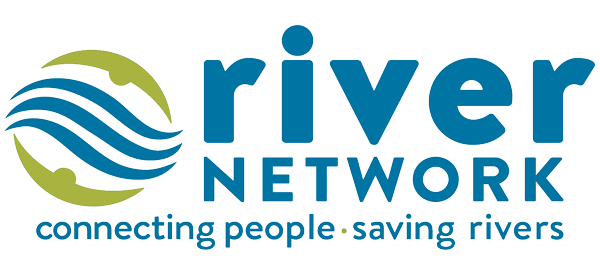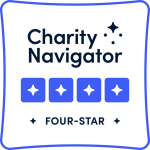Building Local Leadership for Community Resilience
In the age of ever-increasing risks and impacts from climate change, communities need creative and long-lasting solutions to strengthen resilience. Often, the most locally and culturally relevant solutions come from those who know their communities best: residents.
For years, River Network has been supporting organizations in leveraging the place-based power and expertise of residents and communities to advance informed and impactful climate resilience. Since publishing the Tools for Equitable Climate Resilience in 2020, we have worked with nearly 30 organizations nationwide to advance community-centered programs and projects. These companion tools focus on Community Leadership Development (CLD) and Community Led Research (CLR) as strategies to center communities in climate planning and mitigation.
River Network is currently using the Fostering Community Leadership tool to work with three organizations that are addressing the need for localized water and climate leaders. This tool lays out 8 steps to building a successful Community Leadership Development program:
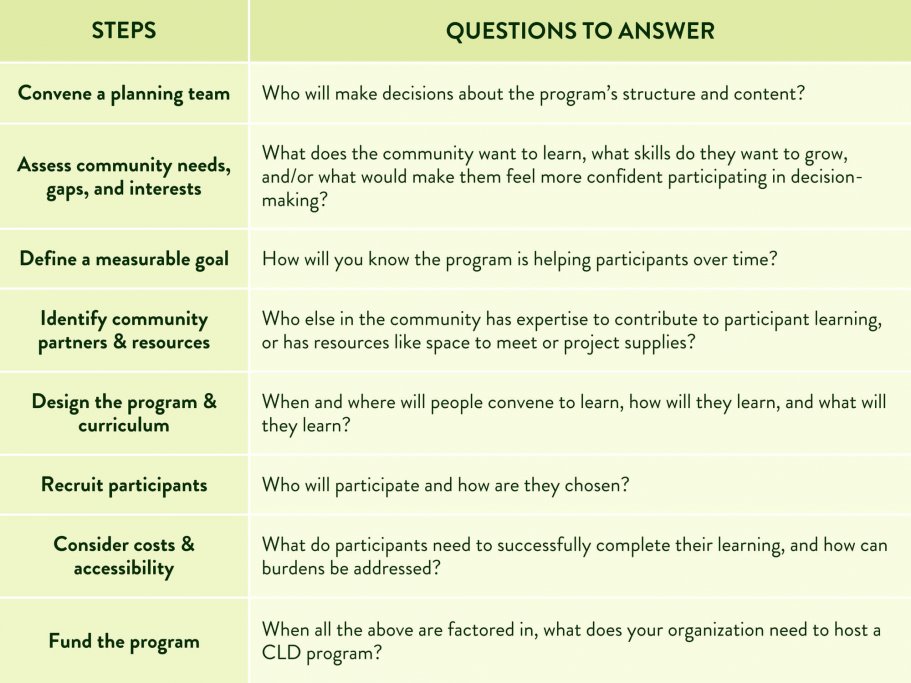
- Convene a planning team – who will make decisions about the program’s structure and content?
- Assess community needs, gaps, and interests – what does the community want to learn, what skills do they want to grow, and/or what would make them feel more confident participating in decision-making?
- Define a measurable goal – how will you know the program is helping participants over time?
- Identify community partners & resources – who else in the community has expertise to contribute to participant learning, or has resources like space to meet or project supplies?
- Design the program and curriculum – when and where will people convene to learn, how will they learn, and what will they learn?
- Recruit participants – who will participate and how are they chosen?
- Consider costs & accessibility – what do participants need to successfully complete their learning, and how can burdens be addressed?
- Fund the program – when all the above are factored in, what does your organization need to host a CLD program?
Each of these steps is further detailed in the tool, including examples from organizations with successful leadership development programs across the country. As organizations plan their programs, they learn the best ways to build local capacity in their specific community, as well as how to honor the knowledge and capacities already present. Many of the steps may happen concurrently or iteratively; building a community-centered program is not a linear process. Many organizations will return to these steps even after a program is implemented, ensuring programming stays relevant and responsive to community needs. The program planning process can take upwards of one year, depending on an organization’s existing relationships with community members and partner organizations. It’s common that organizations spend the most time on the community assessment stage, learning specifically what community members seek from a capacity-building program.
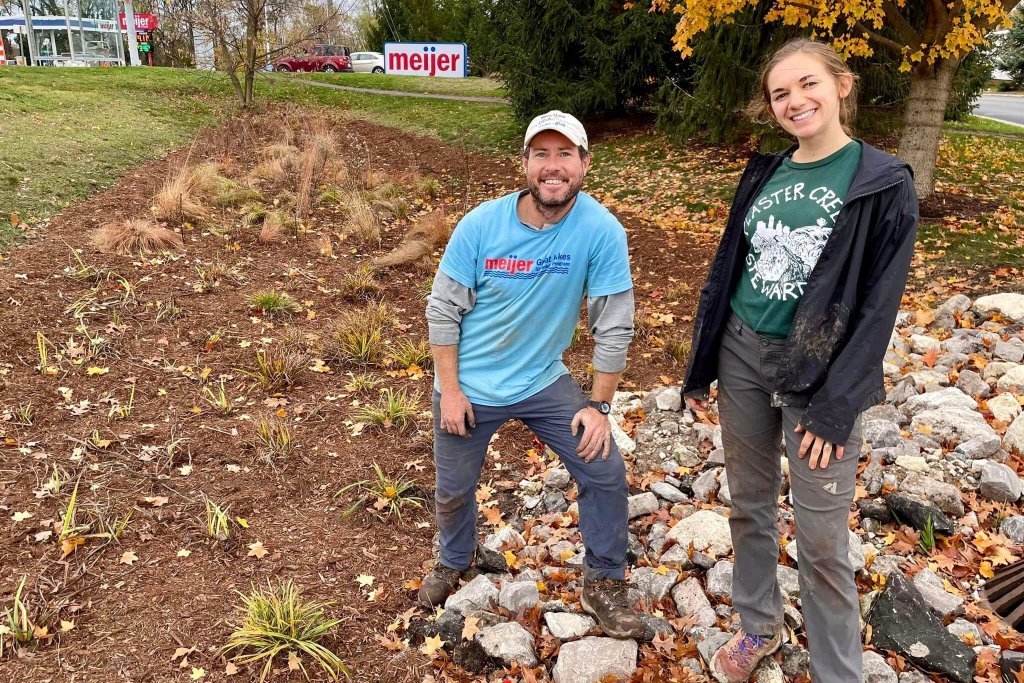
Below, we’ll learn how Audubon Great Lakes, Watersheds of South Pittsburgh, and Plaster Creek Stewards are creating impactful programs in their communities and activating local leaders as critical components of climate infrastructure.
Audubon Great Lakes
(office in Chicago, IL; working in Gary, IN)
Mission: To conserve and restore natural ecosystems, focusing on birds, other wildlife, and their habitats for the benefit of humanity and the earth’s biological diversity.
Program Progress: Step 2 & 4 – Assess Community Needs & Identify Partners
In 2024, Audubon Great Lakes evaluated the capacity-building needs of community members in Gary, Indiana, through their regular engagement activities in the Little Calumet River watershed. Through nature walks, birding, and storytelling circles they’ve been building an understanding of the multi-generational political and environmental challenges facing Gary residents. River Network has been assisting in analyzing that information to develop a responsive youth-focused leadership program that will launch in 2025. Through partnerships with organizations like Calumet Collaborative, Brown Faces Green Spaces and The Urban League of Northwest Indiana, Audubon Great Lakes has learned a great deal about what’s already available to Gary residents and is planning to build on existing recreational and educational opportunities for youth in Gary. Working with youth from 12-18 years old, learning modules in the program will address nature-based solutions and climate change, but the skill-building components will focus on writing, public speaking, mentorship, advocacy, and community building.
Watersheds of South Pittsburgh
(Pittsburgh, PA)
Mission: To transform neglected waterways into thriving ecosystems and valuable community assets, enhancing environmental sustainability and community well-being.
Program Progress: Step 5 – Design Program & Curriculum
In the Saw Mill Run watershed, Watersheds of South Pittsburgh (WoSPgh) is leveraging a redevelopment master planning process to engage residents in capacity building. The Saw Mill Run Valley is overdeveloped and contains a large transit corridor that is unsafe, pollution-heavy, flood-prone, and economically devastating for the 14 neighborhoods in the watershed. WoSPgh has been collecting feedback via a community survey to understand the capacities residents feel they need to participate in a master planning task force opportunity, which would combine the ideas of technical experts and residents to reimagine six large riverfront sites and implement nature-based solutions to flooding, pollution, and pedestrian access/safety. WoSPgh is in the process of designing a multi-module training program to prepare the first cohort of residents to participate in the task force; the program will remain intact in future years to invite new residents into the multi-year process. There will also be training components for the technical experts, representing state and local agencies, to better understand sharing space with residents and to improve their community engagement skills and tactics. The program will meet twice per month starting in Spring 2025 and will incorporate in-person and virtual learning.
Plaster Creek Stewards
(Grand Rapids, MI)
Mission: To reconcile relationships between people and the natural world by restoring health and beauty to the Plaster Creek Watershed.
Program Progress: Implemented program
In 2024, after a full year of planning, Plaster Creek Stewards (PCS) successfully launched Project GreenER, a program activating residents as leaders in the Plaster Creek Watershed. The program integrated water, climate, justice, and ecology topics over 8 in-person sessions. Learning sessions utilized discussions, panels, field trips, hands-on projects, and classroom-style learning to build confidence across all topics. Utilizing grant support from River Network via the Kresge Foundation, participants received a project stipend to implement their own project based on their learnings. Projects included rain gardens on residential, commercial, and public land; improvements to a community garden space; and community education. At the start of 2025, PCS is recruiting participants for their second cohort of Project GreenER, launching in February 2025.
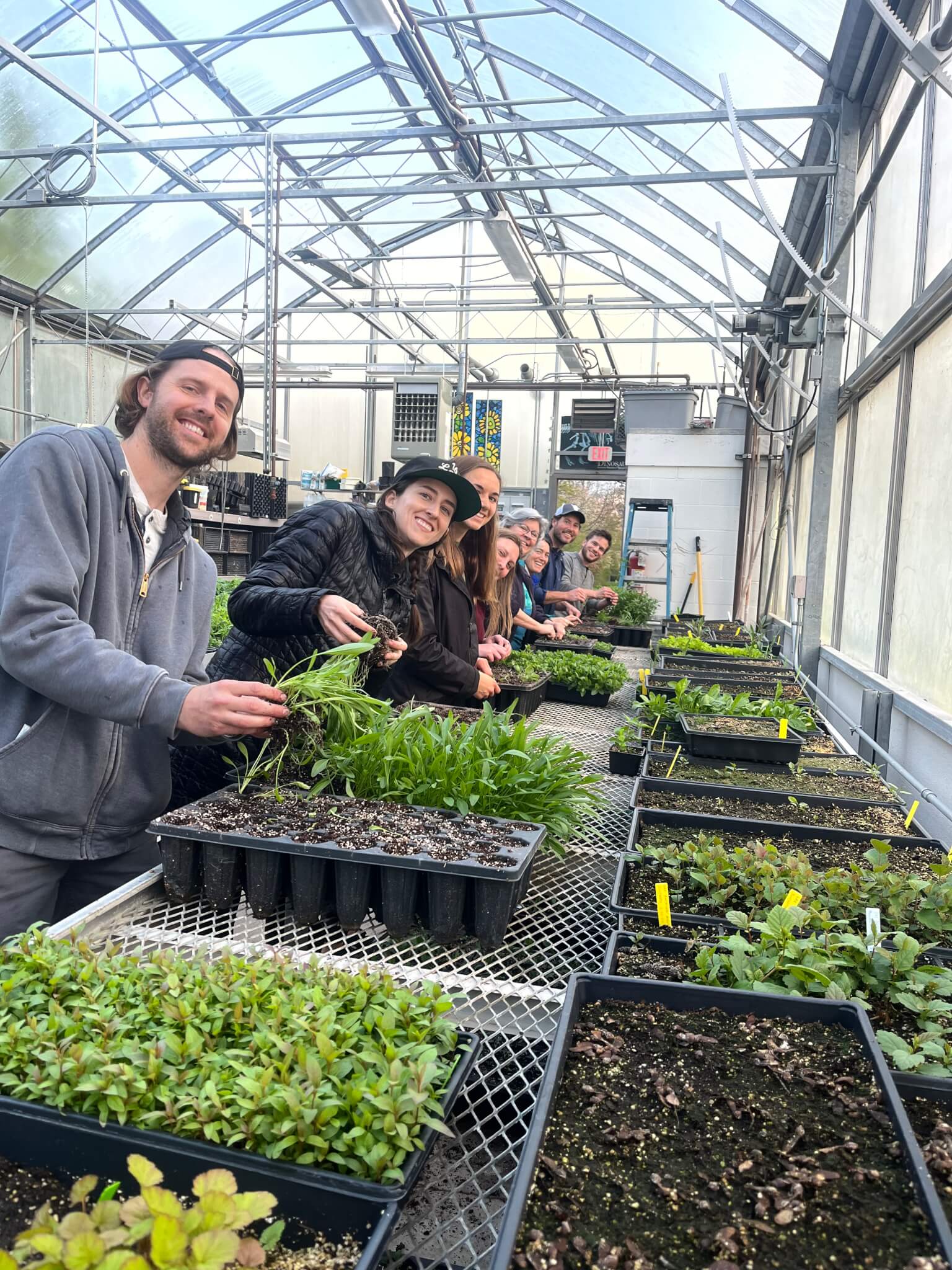
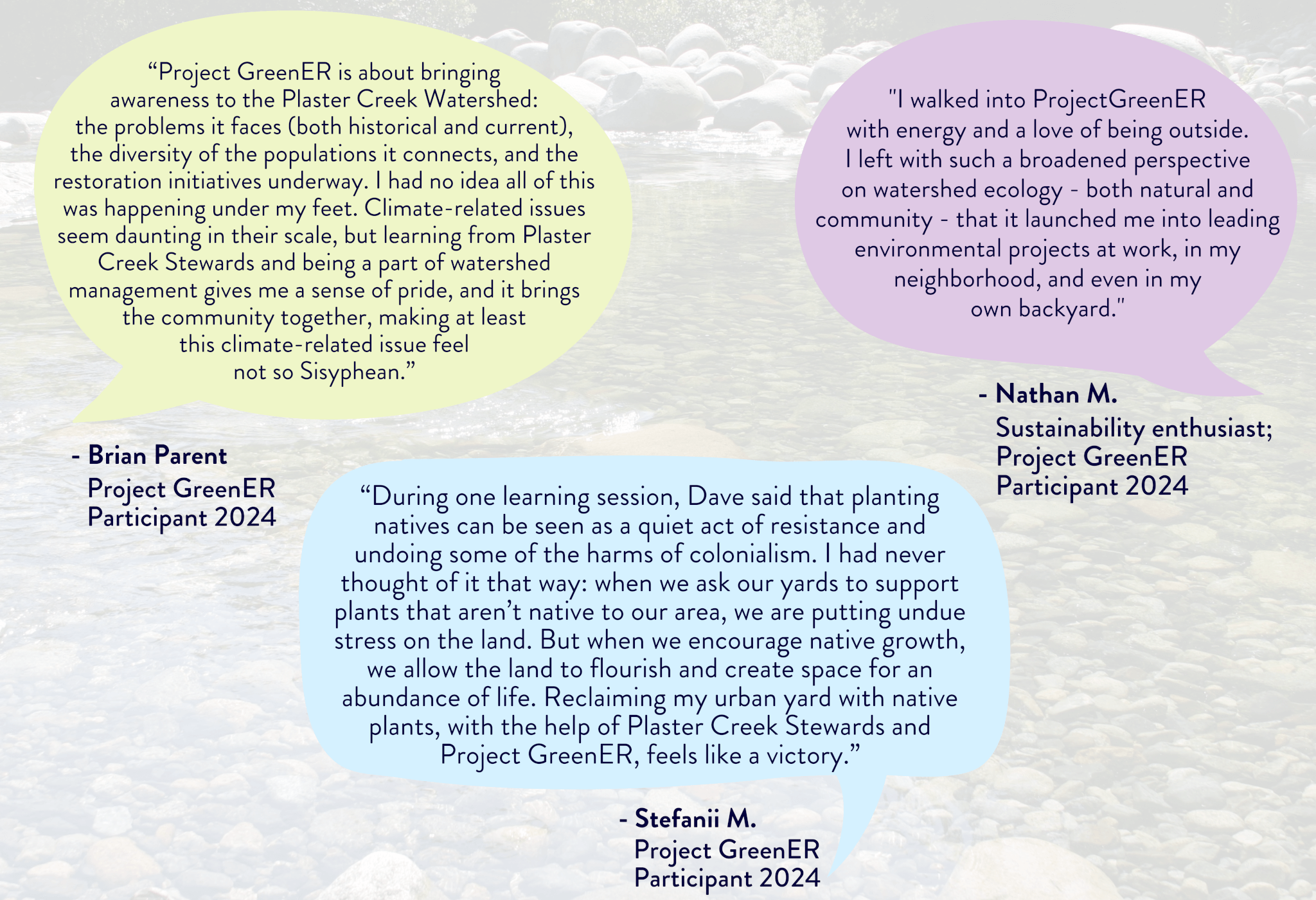
Continuing Investments in Local Leaders
River Network continues to advance local climate leadership in communities across the nation: with funding from the Kresge Foundation and Patagonia, we are currently onboarding the fourth round of grantees receiving technical assistance and funding to advance their own climate resilience initiatives. Since we began this work in 2020, physical and political landscapes have evolved significantly: climate disasters, along with elections at every level of government, have brought considerable and constant challenges to sustainable investments in resilience. Amidst these ever-changing landscapes, River Network maintains that the best way to address climate change is to invest directly in community capacity and local leadership.
We encourage people, in times of turbulence and uncertainty, to turn toward one another and look to the knowledge and leadership present in their communities. You can find resources to advance local leaders on River Network’s website:
